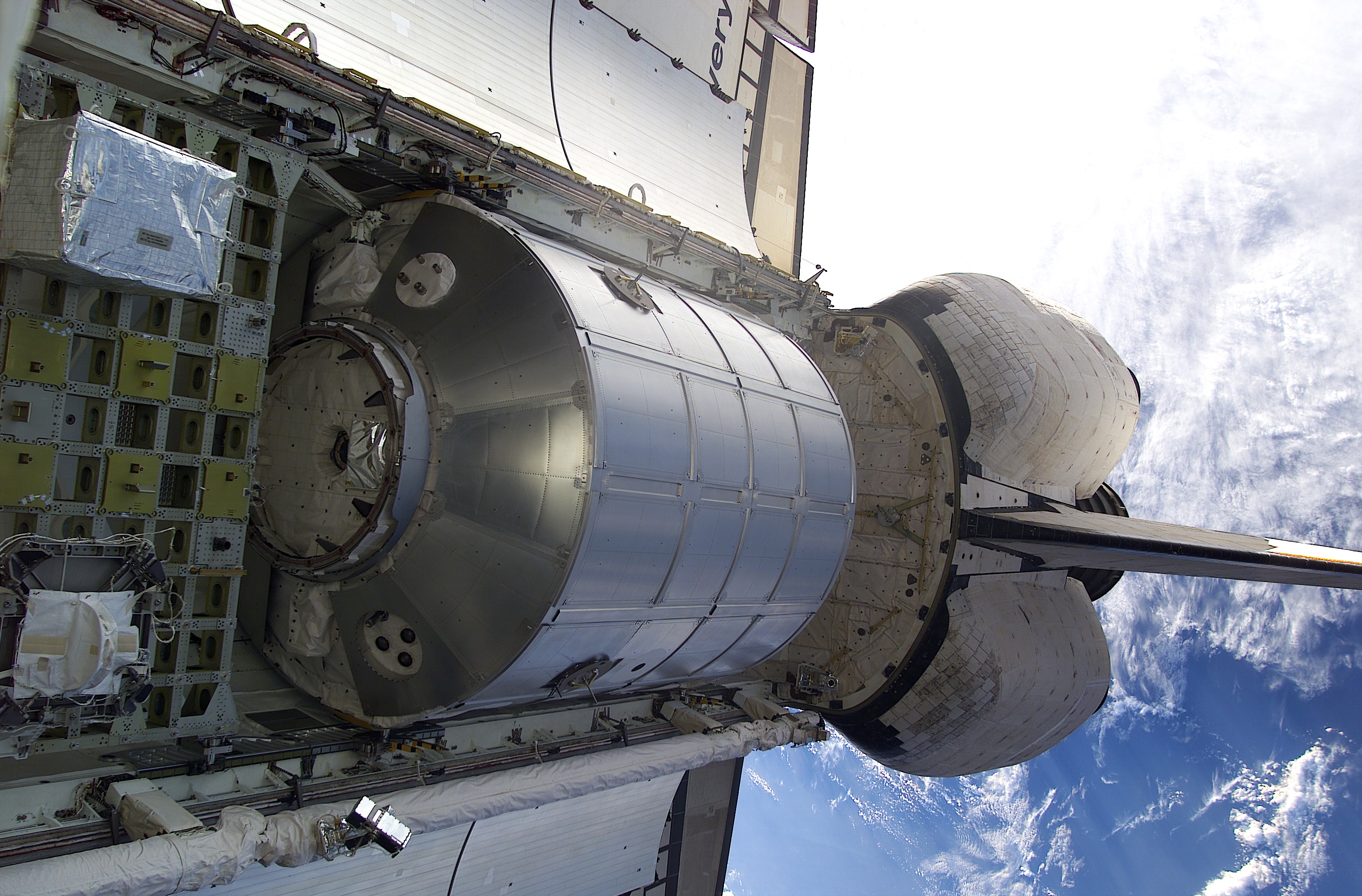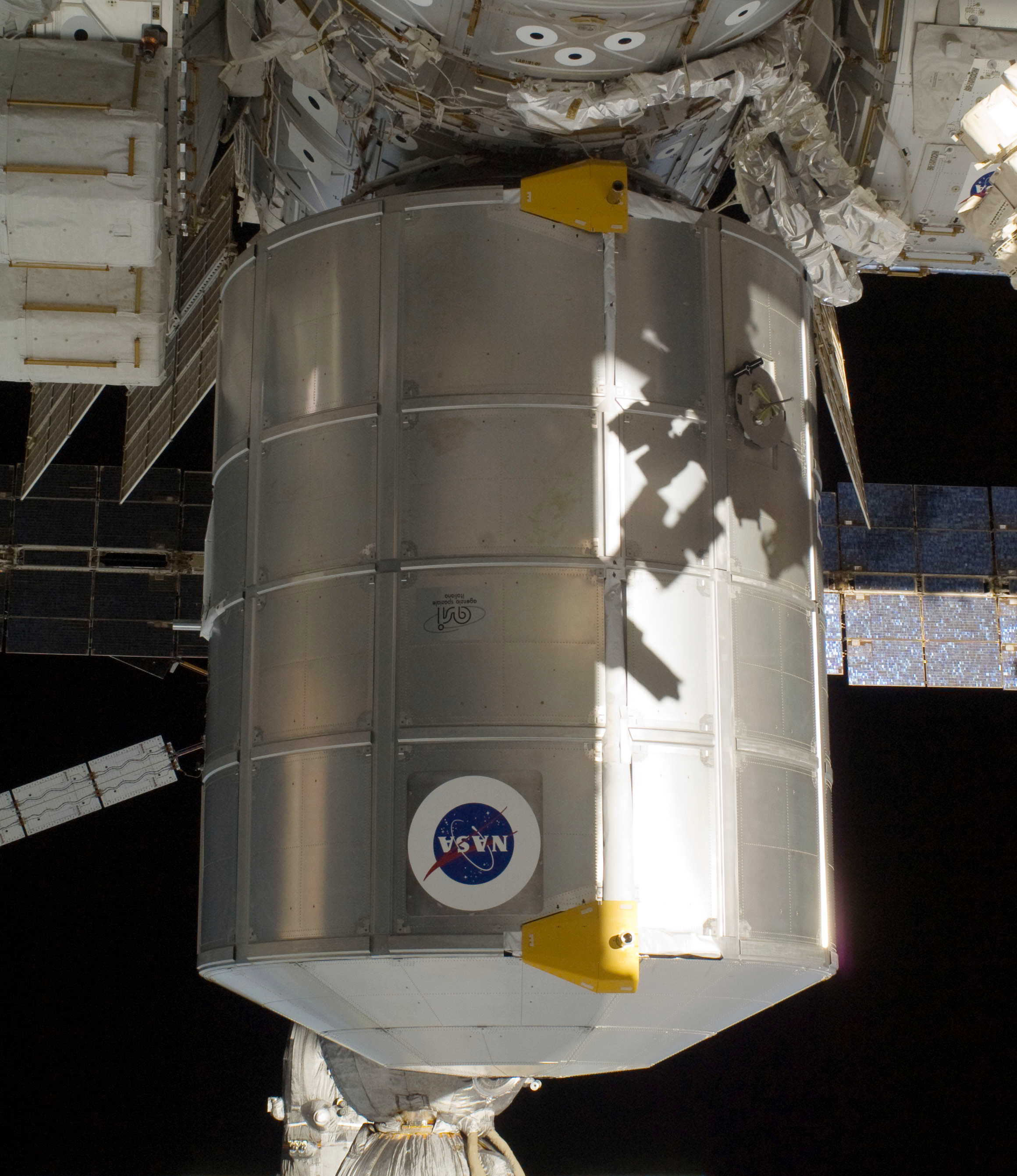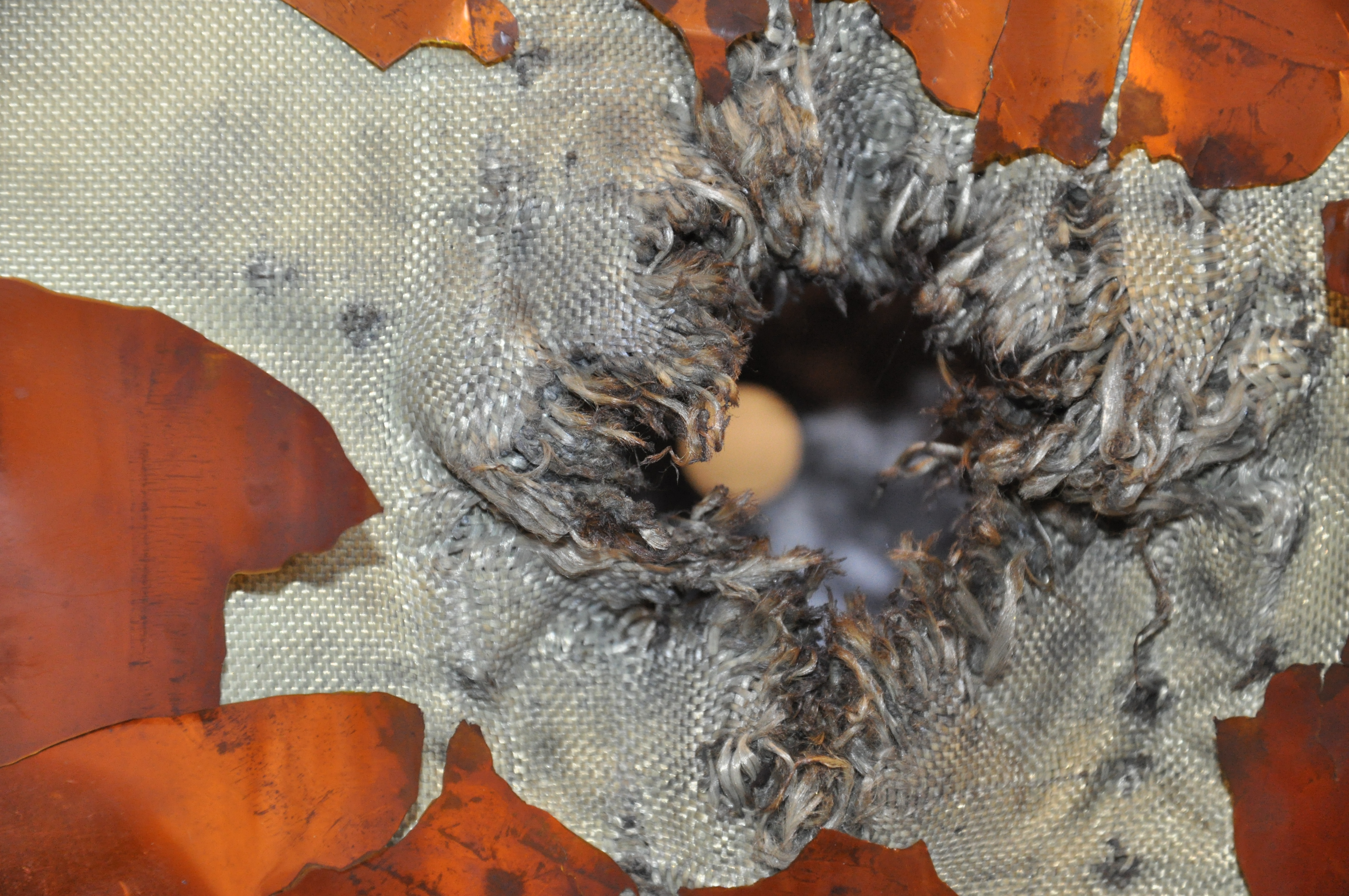|
MPLM
A Multi-Purpose Logistics Module (MPLM) is a large pressurized container that was used on Space Shuttle missions to transfer cargo to and from the International Space Station (ISS). Two MPLMs made a dozen trips in the Shuttle cargo bay and initially berthed to the ''Unity'' module and later the ''Harmony'' module on the ISS. From there, supplies were offloaded, and finished experiments and waste were reloaded. The MPLM was then reberthed in the Shuttle for return to Earth. Three modules were built by the Italian Space Agency (ASI): ''Leonardo'', ''Raffaello'', and ''Donatello''. The ''Leonardo'' module was modified in 2010 to turn it into the Permanent Multipurpose Module (PMM) and was permanently attached to the ISS during the STS-133 mission in March 2011. In July 2011, the ''Raffaello'' module was the primary payload on the final Space Shuttle mission. It returned with the Shuttle and was stored at the Kennedy Space Center. The ''Donatello'' module never launched. M ... [...More Info...] [...Related Items...] OR: [Wikipedia] [Google] [Baidu] |
Leonardo MPLM
The ''Leonardo'' Permanent Multipurpose Module (PMM) is a module of the International Space Station. It was flown into space aboard the Space Shuttle ''Discovery'' on STS-133 on 24 February 2011 and installed on 1 March. ''Leonardo'' is primarily used for storage of spares, supplies and waste on the ISS, which was until then stored in many different places within the space station. It is also the personal hygiene area for the astronauts who live in the US Orbital Segment. The ''Leonardo'' PMM was a Multi-Purpose Logistics Module (MPLM) before 2011, then was modified into its current configuration. It was formerly one of two MPLM used for bringing cargo to and from the ISS with the Space Shuttle. The module was named for Italian polymath Leonardo da Vinci. Like the other Multi-Purpose Logistics Modules, it was constructed by the Italian Space Agency, who chose to name it after Leonardo da Vinci. Construction began in April 1996, and the module was delivered to NASA at the Kennedy ... [...More Info...] [...Related Items...] OR: [Wikipedia] [Google] [Baidu] |
Common Berthing Mechanism
The Common Mechanism (CBM) connects habitable elements in the US Orbital Segment (USOS) of the International Space Station (ISS). The CBM has two distinct sides that, once mated, form a cylindrical vestibule between modules. The vestibule is about long and across. At least one end of the vestibule is often limited in diameter by a smaller bulkhead penetration. The elements are maneuvered to the berthing-ready position by a . Latches and bolts on the Active CBM (ACBM) side pull fittings and floating nuts on the Passive CBM (PCBM) side to align and join the two. After the vestibule is pressurized, crew members clear a passage between modules by removing some CBM components. Utility connectors are installed between facing bulkheads, with a closeout panel to cover them. The resulting tunnel can be used as a loading bay, admitting large payloads from visiting cargo spacecraft that would not fit through a typical personnel passageway. Design overview All CBM types feat ... [...More Info...] [...Related Items...] OR: [Wikipedia] [Google] [Baidu] |
Raffaello MPLM
The ''Raffaello'' MPLM, also known as MPLM-2, was one of three Multi-Purpose Logistics Modules which were operated by NASA to transfer supplies and equipment to and from the International Space Station. ''Raffaello'' was used for four of twelve MPLM flights to the space station, with '' Leonardo'' being used for the remainder. It was first launched on 19 April 2001, aboard the STS-100 mission flown by , and made its third flight in July 2005, aboard '' Discovery'' on STS-114. ''Raffaello''s final flight was aboard on the STS-135 mission, the last flight of the Space Shuttle. As of June 2015, it is now being stored at the Kennedy Space Center. Construction Like the other Multi-Purpose Logistics Modules, ''Raffaello'' was constructed by the Italian Space Agency, who chose to name it after the painter and architect Raffaello Sanzio. The module was constructed in the late 1990s, and delivered to NASA at the Kennedy Space Center The John F. Kennedy Space Center (KSC, orig ... [...More Info...] [...Related Items...] OR: [Wikipedia] [Google] [Baidu] |
STS-133
STS-133 (ISS assembly flight ULF5) was the 133rd mission in NASA's Space Shuttle program; during the mission, Space Shuttle ''Discovery'' docked with the International Space Station. It was ''Discovery'''s 39th and final mission. The mission launched on 24 February 2011, and landed on 9 March 2011. The crew consisted of six American astronauts, all of whom had been on prior spaceflights, headed by Commander Steven Lindsey. The crew joined the long-duration six person crew of Expedition 26, who were already aboard the space station. About a month before lift-off, one of the original crew members, Tim Kopra, was injured in a bicycle accident. He was replaced by Stephen Bowen. The mission transported several items to the space station, including the Permanent Multipurpose Module ''Leonardo'', which was left permanently docked to one of the station's ports. The shuttle also carried the third of four ExPRESS Logistics Carriers to the ISS, as well as a humanoid robot called Robo ... [...More Info...] [...Related Items...] OR: [Wikipedia] [Google] [Baidu] |
Donatello
Donato di Niccolò di Betto Bardi ( – 13 December 1466), better known as Donatello ( ), was a Florentine sculptor of the Renaissance period. Born in Florence, he studied classical sculpture and used this to develop a complete Renaissance style in sculpture. He spent time in other cities, and while there he worked on commissions and taught others; his periods in Rome, Padua, and Siena introduced to other parts of Italy his techniques, developed in the course of a long and productive career. Financed by Cosimo de' Medici, Donatello's ''David'' was the first freestanding nude male sculpture since antiquity. He worked with stone, bronze, wood, clay, stucco, and wax, and had several assistants, with four perhaps being a typical number. Although his best-known works mostly were statues in the round, he developed a new, very shallow, type of bas-relief for small works, and a good deal of his output was larger architectural reliefs. Early life Donatello was the son of Niccolò ... [...More Info...] [...Related Items...] OR: [Wikipedia] [Google] [Baidu] |
International Space Station
The International Space Station (ISS) is the largest Modular design, modular space station currently in low Earth orbit. It is a multinational collaborative project involving five participating space agencies: NASA (United States), Roscosmos (Russia), JAXA (Japan), European Space Agency, ESA (Europe), and Canadian Space Agency, CSA (Canada). The ownership and use of the space station is established by intergovernmental treaties and agreements. The station serves as a microgravity and space environment research laboratory in which Scientific research on the International Space Station, scientific research is conducted in astrobiology, astronomy, meteorology, physics, and other fields. The ISS is suited for testing the spacecraft systems and equipment required for possible future long-duration missions to the Moon and Mars. The International Space Station programme, ISS programme evolved from the Space Station Freedom, Space Station ''Freedom'', a 1984 American proposal to constr ... [...More Info...] [...Related Items...] OR: [Wikipedia] [Google] [Baidu] |
Harmony (ISS Module)
''Harmony'', also known as ''Node 2'', is the "utility hub" of the International Space Station. It connects the laboratory modules of the United States, Europe and Japan, as well as providing electrical power and electronic data. Sleeping cabins for four of the crew are housed here. ''Harmony'' was successfully launched into space aboard Space Shuttle flight STS-120 on 23 October 2007. After temporarily being attached to the port side of the ''Unity'' module, it was moved to its permanent location on the forward end of the ''Destiny'' module on 14 November 2007. ''Harmony'' added to the station's living volume, an increase of almost 20%, from to . Its successful installation meant that from NASA's perspective, the station was considered to be "U.S. Core Complete". Origin of name The unit formerly known as ''Node 2'' was renamed ''Harmony'' in March 2004. The name was chosen in a competition where more than 2,200 students from 32 states participated. The ''Node 2 C ... [...More Info...] [...Related Items...] OR: [Wikipedia] [Google] [Baidu] |
Columbus (ISS Module)
''Columbus'' is a science laboratory that is part of the International Space Station (ISS) and is the largest single contribution to the ISS made by the European Space Agency (ESA). Like the ''Harmony'' and '' Tranquility'' modules, the ''Columbus'' laboratory was constructed in Turin, Italy by Thales Alenia Space. The functional equipment and software of the lab was designed by EADS in Bremen, Germany. It was also integrated in Bremen before being flown to the Kennedy Space Center (KSC) in Florida in an Airbus Beluga. It was launched aboard on February 7, 2008, on flight STS-122. It is designed for ten years of operation. The module is controlled by the Columbus Control Centre, located at the German Space Operations Center, part of the German Aerospace Center in Oberpfaffenhofen near Munich, Germany. The European Space Agency has spent €1.4 billion (about US$2 billion) on building ''Columbus'', including the experiments it carries and the ground control inf ... [...More Info...] [...Related Items...] OR: [Wikipedia] [Google] [Baidu] |
Automated Transfer Vehicle
The Automated Transfer Vehicle, originally Ariane Transfer Vehicle or ATV, was an expendable automated cargo spacecraft, cargo spacecraft developed by the European Space Agency (ESA), used for space cargo transport in 2008–2015. The ATV design was launched to orbit five times, exclusively by the Ariane 5 heavy-lift launch vehicle. It effectively was a larger European counterpart to the Russian Progress (spacecraft), Progress cargo spacecraft for carrying upmass to a single destination—the International Space Station (ISS)—but with three times the capacity. The five ATVs were named after important European figures in science and engineering: ''Jules Verne ATV, Jules Verne'', ''Johannes Kepler ATV, Johannes Kepler'', ''Edoardo Amaldi ATV, Edoardo Amaldi'', ''Albert Einstein ATV, Albert Einstein'', and ''Georges Lemaître ATV, Georges Lemaître''. Following several delays to the program, the first of these was launched in March 2008. These ATVs performed supply missions to t ... [...More Info...] [...Related Items...] OR: [Wikipedia] [Google] [Baidu] |
Spacelab
Spacelab was a reusable laboratory developed by European Space Agency (ESA) and used on certain spaceflights flown by the Space Shuttle. The laboratory comprised multiple components, including a pressurized module, an unpressurized carrier, and other related hardware housed in the Shuttle's cargo bay. The components were arranged in various configurations to meet the needs of each spaceflight. Spacelab components flew on a total of about 32 Shuttle missions, depending on how such hardware and missions are tabulated. Spacelab allowed scientists to perform experiments in microgravity in geocentric orbit. There was a variety of Spacelab-associated hardware, so a distinction can be made between the major Spacelab program missions with European scientists running missions in the Spacelab habitable module, missions running other Spacelab hardware experiments, and other Space Transportation System (STS) missions that used some component of Spacelab hardware. There is some variation ... [...More Info...] [...Related Items...] OR: [Wikipedia] [Google] [Baidu] |








